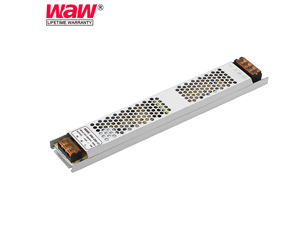
Wenzhou wode electrical co.,LTD
Tel: +86 577 62602806Phone: 86-18106781616E-mail: wode@wodeps.com

Tel: +86 577 62602806Phone: 86-18106781616E-mail: wode@wodeps.com

Date:2021.05.26 Views:3490
There's the old saying, "Use the right tool for the job!" But sometimes there are multiple "right tools" for the job, so how do you know which one to use? In order to select the right power supply there are some important basics to understand.
YUEQING WODE ELECTRICAL CO., LTD is a high-tech specialized manufacturer in China, our product lines include single output, Dual output ,Triple output and quad output switching power supply, Din rail power supply, miniature power supply, rainproof power supply, LED driver and waterproof LED driver, They are widely use in LED lighting, CCTV, medical equipment, communication, monitors, and office automation fields. Wode got the quality system certificated of CE LVD EMC ROHS for switching power supply and waterproof degree IP68 for LED driver. Next, the switching power supply supplier will share the following content with you.

Switching Power Supply
Power Supply TermsFirst off, let's clarify some terms which often confuse people but are important in selecting the right wall adapter power supply. AC-to-DC "switching" power supplies vs. "linear" power supplies are often misleading terms to those who aren't familiar with them. Linear power supplies take an AC input (typically 120VAC or 240VAC), step down the voltage with a transformer, then rectify and filter the input into a DC output.
A switching power supply takes an AC input, but rectifies and filters into DC first, is converted back into AC at some high switching frequency, steps down the voltage with a transformer, then is rectified and filtered into a DC output.
The difference between the linear and switching processes is that they allow for different components to be used. The linear power supply is typically less efficient, uses a bigger and heavier transformer as well as bigger filter components. The switching power supply implies higher efficiency due to the high switching frequency, enabling it to use a smaller, less-costly high-frequency transformer as well as lighter, less-costly filter components. Switching power supplies contain more overall components, therefore are usually more expensive.
There is a difference between "switching" on the input side and "switching" on the output side. What we just discussed referrs to switching on the output side. When talking about the input side, there are 2 types of "switchable" power supplies:
1) Switching - Automatically switches between AC inputs and frequencies, or
2) Switch-selectable - There is a manual switch on the supply that changes the AC input range and frequency.
Sumarizing although the linear process seems to be more efficient due to it shorter process, a switching power supply is in fact more efficient.
Many questions also arise when speaking of "regulated" vs. "unregulated" power supplies. These terms deal with the control circuit of the power supply.
In an unregulated power supply, the switching transistor stays at a constant duty cycle, so there is nothing to control the output. Outputs do not stay at a definite value; instead, they fluctuate slightly when different loads are applied. Only a very low voltage will cause the supply to shut down.
In a regulated power supply, the output is kept very close to its rated output by changing the duty cycle to compensate for changes in the load. This provides for better protection of your devices and more accurate outputs.
The main differences between regulated and unregulated power supplies are protection and price. Regulated power supplies provide better efficiency and protection, but unregulated power supplies are substantially cheaper in cost.
If you want to know about the wholesale best switching power supply price, welcome to contact us.